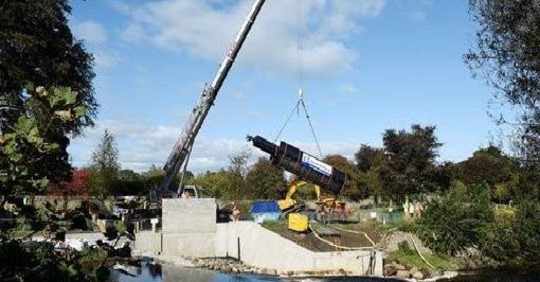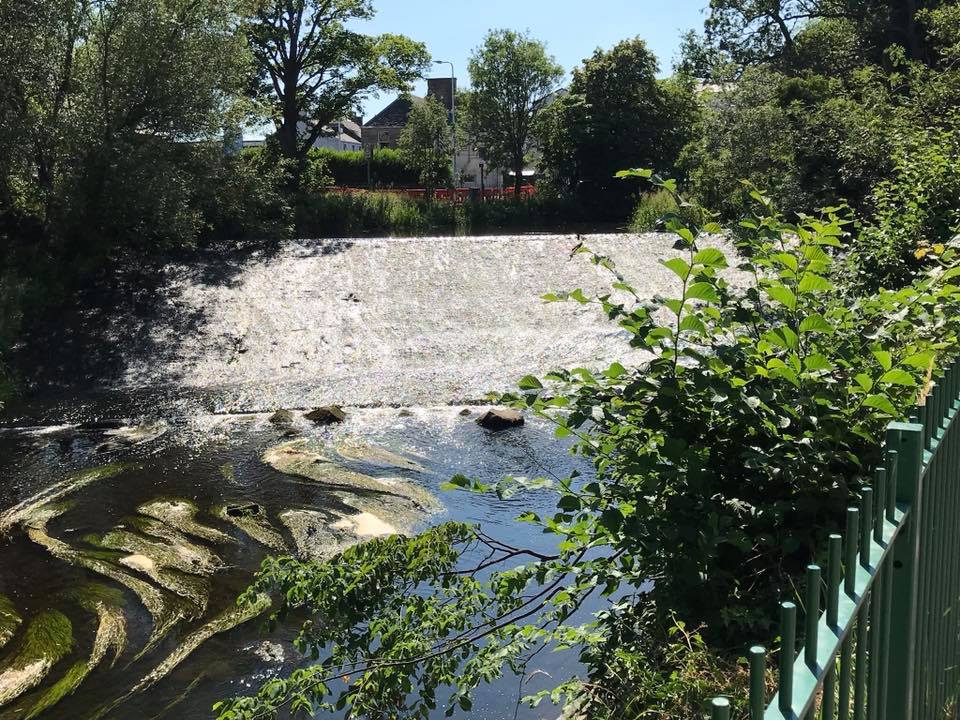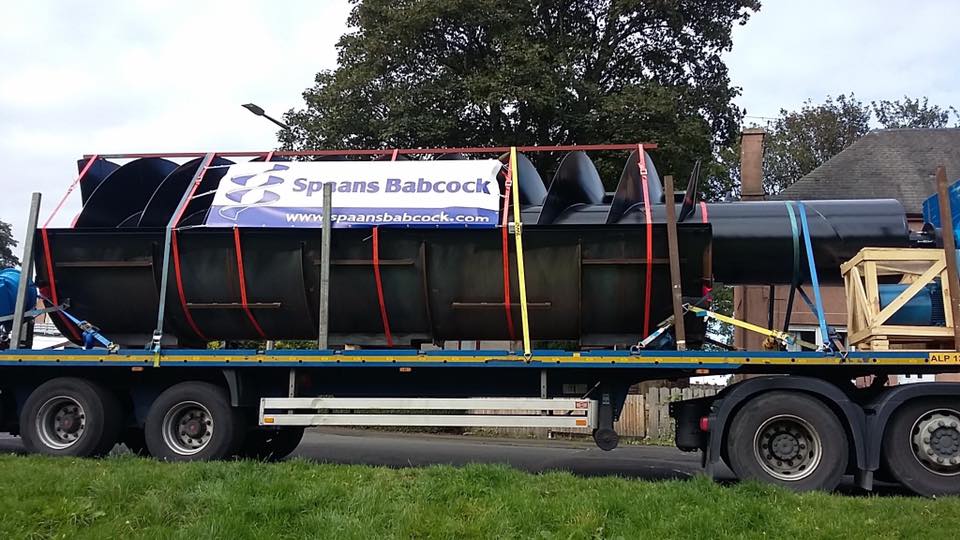Archimedes Screw
 An exciting new renewable energy project at Edinburgh’s Saughton Park nods to the past and signposts the future, says GAVIN CORBETT
An exciting new renewable energy project at Edinburgh’s Saughton Park nods to the past and signposts the future, says GAVIN CORBETT
It was one of Edinburgh’s council planners who spotted it. At a workshop to look at the supply of and demand for light industrial workspace he showed a map of current premises with a discernable pattern running diagonally across the city from south west to north east. It was not easily explicable by reference to the usual magnets: rail, or motorway or airport proximity. The key, it turned out, was the route of the Water of Leith, Edinburgh’s main river, running from the Pentland Hills to Leith. It is testament to the river’s former role as Edinburgh’s powerhouse, with, at one time, 70 mills on its length, that, two centuries on, the location of industry still owes it an allegiance.
Those days are long gone, of course. And a good thing too. Over the last 30 years the Water of Leith Conservation Trust, among others, have painstakingly nourished the river back from its polluted state, so that it now offers a haven for otters and kingfishers. But it is still possible for that restoration to go hand with the river’s role in power generation – witness Harlaw Community Hydro, up at Balerno, now in its fifth year – albeit in a more benign way than in earlier decades.
 Now joining Harlaw is a new scheme, seven miles downstream at Saughton Park. As part of a multi-million pound restoration of one of Edinburgh’s hidden gems, funded mainly by the Heritage Lottery Fund, Saughton Park will now host a new micro-hydro scheme on the main weir between the park and Gorgie Road. With funding from SPEN’s Green Economy Fund, the hydro scheme is based on a 39kW reverse Archimedes screw turbine running down one side of the weir and which has now been put in place at the start of October 2019.
Now joining Harlaw is a new scheme, seven miles downstream at Saughton Park. As part of a multi-million pound restoration of one of Edinburgh’s hidden gems, funded mainly by the Heritage Lottery Fund, Saughton Park will now host a new micro-hydro scheme on the main weir between the park and Gorgie Road. With funding from SPEN’s Green Economy Fund, the hydro scheme is based on a 39kW reverse Archimedes screw turbine running down one side of the weir and which has now been put in place at the start of October 2019.
As the name implies, the Archimedes screw has been around for a while (since before Archimedes, in fact). Just as turning a corkscrew lifts a cork out of a bottle, so the same principle can be used to lift water out of a river to irrigate parched land. However, it is only recently that the flipside has been adapted commercially for turbine use, with falling water turning the blades of the screw much as it does with a water wheel. The strength of an Archimedes screw design is that it can work with quite a low head of water on a modest gradient, which is well-suited to the Water of Leith at the relatively flat area around Saughton Park.
Once fully operational in a few months, the electricity generated will be enough to power the lighting in the park and in the buildings which include a café, community spaces and a base for the Royal Caledonian Horticultural Society as well as the much-loved winter gardens.
 What is more, it will also power the ground source heat pumps which heat all of the buildings. All in all, Saughton Park, will be self-sufficient in locally-sourced renewable energy. It is yet another reason to spend time in this wonderfully-restored park, with its history of hosting the Scottish Exhibition of 1908, the re-instated Edwardian bandstand, community growing space, fantastic play and sport facilities, bike hire to suit all abilities and so much more.
What is more, it will also power the ground source heat pumps which heat all of the buildings. All in all, Saughton Park, will be self-sufficient in locally-sourced renewable energy. It is yet another reason to spend time in this wonderfully-restored park, with its history of hosting the Scottish Exhibition of 1908, the re-instated Edwardian bandstand, community growing space, fantastic play and sport facilities, bike hire to suit all abilities and so much more.
In the urgency of transition to a zero carbon Edinburgh by 2030, it’s a drop in the ocean, of course and there is always a danger of mistaking an imaginative demonstration and education project as a substitute for much more comprehensive action. Early on, ambitious plans were considered which could have created district heating for nearby homes, businesses, school and library. But there’s a certainly a place for celebrating the innovative and the small-scale in a way which can generate community excitement about responding to the climate emergency. I look forward to children at nearby Balgreen and St Cuthberts primary schools being on first name terms with Archimedes.
Gavin Corbett is a Green councillor in Edinburgh

Just about every river in The country has a mill stream or weirs, already existing infrastructure that can be re-used with relatively small environmental impact compared to windfarms. Of course many would need some upgrading and maintanance but with half the work in place, why isn’t this happening everywhere?
That could easily be replicated elsewhere – for example, the Clyde, Cart and Kelvin Rivers in Glasgow. Supply your own river names and lobby your council . . .
Yes yes yes
Where would we be without talented Engineers????
This actually answered my drawback, thank you!